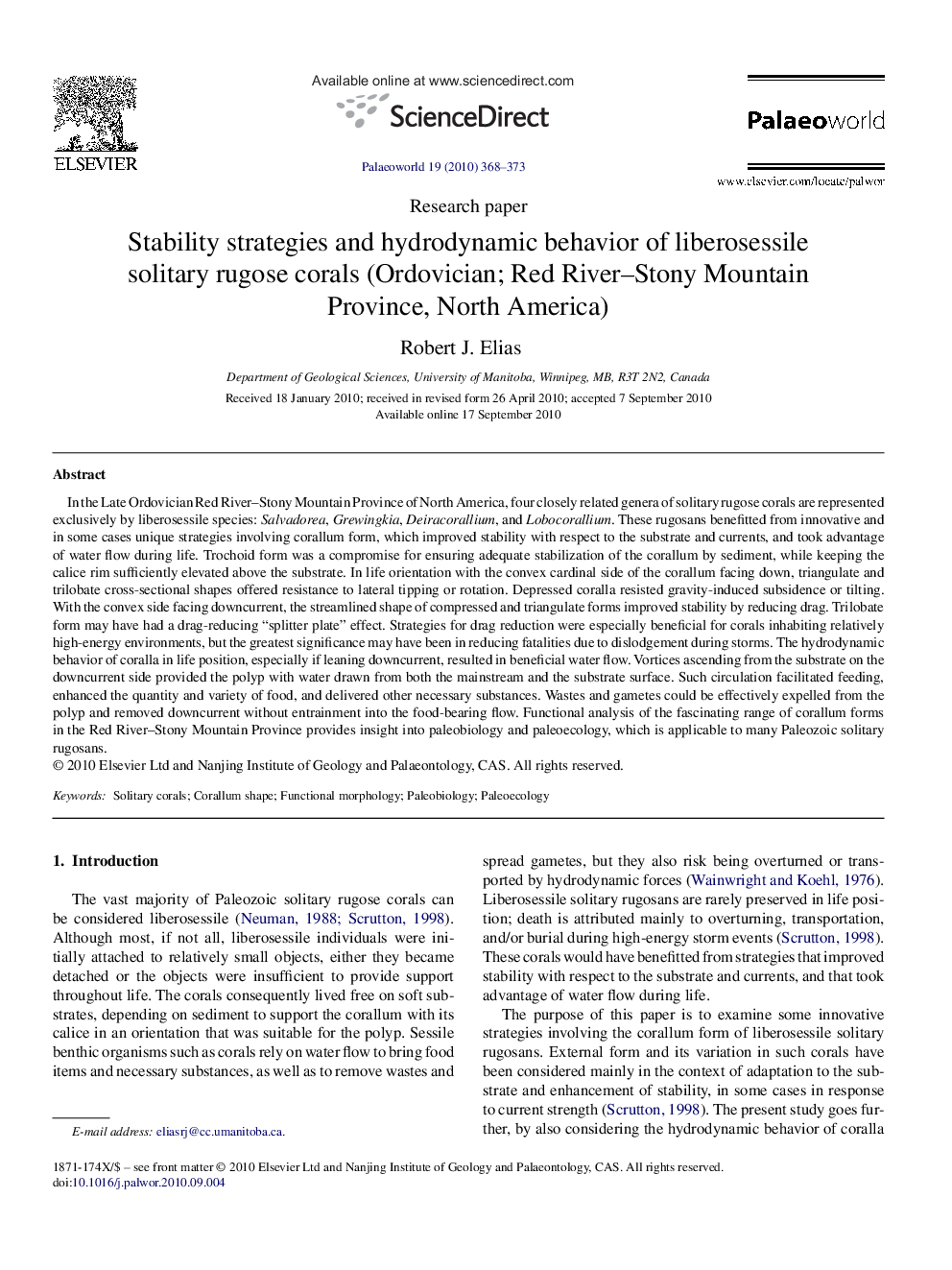| کد مقاله | کد نشریه | سال انتشار | مقاله انگلیسی | نسخه تمام متن |
|---|---|---|---|---|
| 4749834 | 1642282 | 2010 | 6 صفحه PDF | دانلود رایگان |
عنوان انگلیسی مقاله ISI
Stability strategies and hydrodynamic behavior of liberosessile solitary rugose corals (Ordovician; Red River-Stony Mountain Province, North America)
دانلود مقاله + سفارش ترجمه
دانلود مقاله ISI انگلیسی
رایگان برای ایرانیان
کلمات کلیدی
موضوعات مرتبط
مهندسی و علوم پایه
علوم زمین و سیارات
فسیل شناسی
پیش نمایش صفحه اول مقاله

چکیده انگلیسی
In the Late Ordovician Red River-Stony Mountain Province of North America, four closely related genera of solitary rugose corals are represented exclusively by liberosessile species: Salvadorea, Grewingkia, Deiracorallium, and Lobocorallium. These rugosans benefitted from innovative and in some cases unique strategies involving corallum form, which improved stability with respect to the substrate and currents, and took advantage of water flow during life. Trochoid form was a compromise for ensuring adequate stabilization of the corallum by sediment, while keeping the calice rim sufficiently elevated above the substrate. In life orientation with the convex cardinal side of the corallum facing down, triangulate and trilobate cross-sectional shapes offered resistance to lateral tipping or rotation. Depressed coralla resisted gravity-induced subsidence or tilting. With the convex side facing downcurrent, the streamlined shape of compressed and triangulate forms improved stability by reducing drag. Trilobate form may have had a drag-reducing “splitter plate” effect. Strategies for drag reduction were especially beneficial for corals inhabiting relatively high-energy environments, but the greatest significance may have been in reducing fatalities due to dislodgement during storms. The hydrodynamic behavior of coralla in life position, especially if leaning downcurrent, resulted in beneficial water flow. Vortices ascending from the substrate on the downcurrent side provided the polyp with water drawn from both the mainstream and the substrate surface. Such circulation facilitated feeding, enhanced the quantity and variety of food, and delivered other necessary substances. Wastes and gametes could be effectively expelled from the polyp and removed downcurrent without entrainment into the food-bearing flow. Functional analysis of the fascinating range of corallum forms in the Red River-Stony Mountain Province provides insight into paleobiology and paleoecology, which is applicable to many Paleozoic solitary rugosans.
ناشر
Database: Elsevier - ScienceDirect (ساینس دایرکت)
Journal: Palaeoworld - Volume 19, Issues 3â4, December 2010, Pages 368-373
Journal: Palaeoworld - Volume 19, Issues 3â4, December 2010, Pages 368-373
نویسندگان
Robert J. Elias,